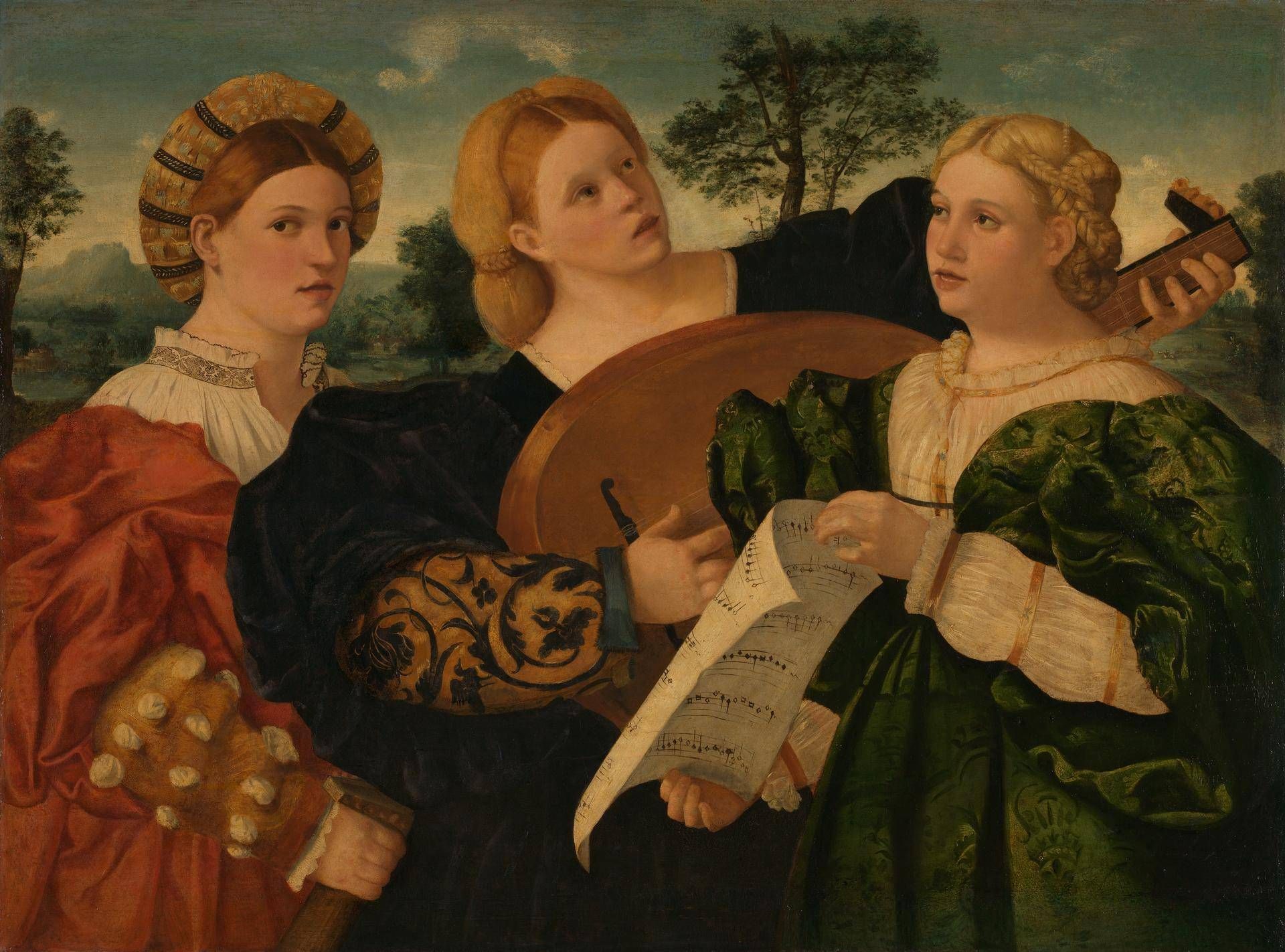
A Concert
Three young ladies are making music outdoors in a landscape of meadows and lakes. They are dressed in expensive clothes made from voluminous quantities of sumptuous silk, damask, brocade and velvet in fashionable styles. The fine white chemise of the woman on the right is minutely pleated and decorated with gold bands. The lady on the left's chemise emerges in little puffs through the slashes in her yellow sleeve. The costumes, with their particularly extravagant sleeves, and the ornamentally plaited hair of the lady on the right can be dated to the 1520s.
The lady on the left holds the neck of a lute, and turns to look at us as though we have disturbed their playing. Her companion continues to play energetically, her arms spread wide around her instrument, while their friend, also unaware of our presence, continues to hold up the music. The tune is written on both sides of the page. Although the ladies' lips are parted, it is not clear whether they are singing. The music is for the lute as there are no words to be sung on the score. If they are singing, it must be by heart.
Images of ensemble singing and music making became popular towards the end of the fifteenth century in northern Italy. Lorenzo Costa's The Concert may be the first example we have of this type of image. It shows a group singing from a book, accompanied by a lute and keeping time with their fingers. Usually in this type of image, three-quarter-length musicians sing or play from musical scores or part books rather than by heart. Although the paintings are often titled 'A Concert', they may depict a private rather than public moment. At the same time that these paintings became popular, musical recitals became fashionable entertainment among the aristocracy and rich citizens of northern Italy. Madrigals with parts for different voices were very popular at these gatherings and were written for the upper classes.
During the nineteenth century this painting was believed to be by the Venetian painter Palma Vecchio, who is particularly associated with half-length female portraits. Although the subject matter is typical of Venetian painters, the colour tones and the landscape - with tiny dark green feathery foliage - are not. It is possible that the sitters were Venetian but that the painter was from elsewhere but working in Venice. It seems likely on stylistic grounds that the painter may have been from Friuli, as the painting resembles the Portrait of a Woman with a Turban and a Lute (private collection) which, in the important 1955 exhibition in Venice Giorgione e i Giorgioneschi, was attributed to Pordenone.
The painting is very damaged and the ladies' faces and the lute have been extensively repainted. The picture was originally painted on wooden panel but was transferred to canvas in St Petersburg in 1868. It may be the 'Musica de Tre Donne' attributed to Palma Vecchio recorded in the Arundel collection in 1654.
Credit: Bequeathed by Lady Lindsay, 1912
mid-1520s
Oil, originally on wood, transferred to canvas
90.8 x 122.2 cm
NG2903
Image and text © The National Gallery, London, 2025
Where you'll find this

Permanent collection



